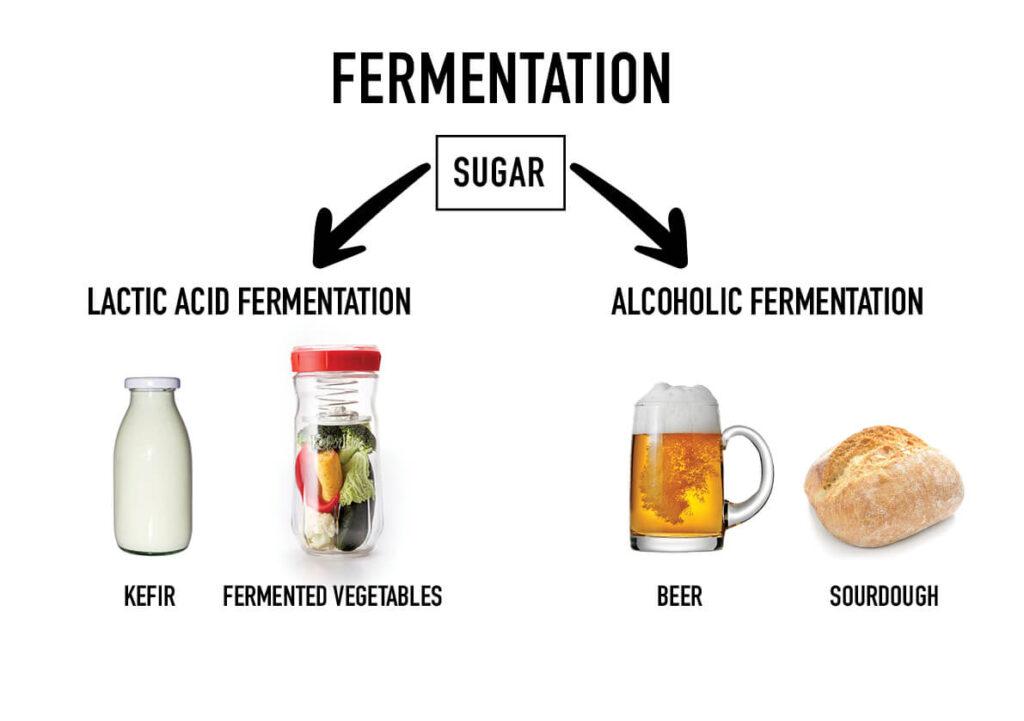Table of Contents
- Understanding Carbohydrates in Kombucha
- Exploring the Fermentation Process and Its Impact on Carb Content
- Comparing Carb Levels in Homemade vs Store-Bought Kombucha
- Health Implications of Kombuchas Carbohydrates
- Tips for Enjoying Kombucha on a Low-Carb Diet
- Q&A
- The Way Forward


Understanding Carbohydrates in Kombucha
When diving into the composition of this trendy fermented tea, it’s essential to distinguish the role of sugars and nutrients. As kombucha brews, the sugar initially added is metabolized by the SCOBY, transforming it into various organic acids and carbon dioxide. This transformation leads to a dynamic nutritional profile shaped by the brewing duration and the type of tea used. The balance of remaining sugars and acids determines the overall carbohydrate content.
Understanding the process helps in choosing the right type of kombucha for your dietary needs. Since each batch can vary, here are some typical characteristics:
- Brew Length: Longer fermentation results in fewer sugars, hence lower carbs.
- Tea Type: Green tea varieties may have a slightly different nutrient profile compared to black tea.
- Flavor Additions: Fruit juices or added sweeteners can increase the carb count.
| Factor | Effect on Carbs |
|---|---|
| Brew Time | Lowers carbohydrate levels |
| Flavorings | May increase due to added sugars |
For avid kombucha drinkers, being informed about these attributes empowers you to tailor your consumption to your nutritional goals. Whether you brew at home or purchase from a store, knowledge of these carbohydrate factors can guide your choices, ensuring each sip aligns with your lifestyle. Pay attention to labels, experiment with brewing times, and enjoy this fizzy elixir wisely.


Exploring the Fermentation Process and Its Impact on Carb Content
The magical journey of kombucha from sweet tea to a tangy, effervescent elixir is deeply rooted in the transformative power of fermentation. This ancient process, facilitated by a symbiotic culture of bacteria and yeast (SCOBY), is paramount in determining the beverage’s carbohydrate profile. Fermentation acts like a metabolic alchemy, where yeast consumes the sugars present, converting them into alcohol which is subsequently broken down into acetic acid and other organic compounds by bacteria. These transformations significantly reduce the original sugar content, influencing the overall carbohydrate levels. Although each batch of kombucha varies due to factors like fermentation duration and temperature, this metabolic magic ensures a lower carb content than the initial sugary tea.
Understanding the nuances of fermentation is crucial for those keen on monitoring their carb intake, particularly those adhering to specific dietary regimes such as keto or low-carb diets. While the carb content in kombucha is generally low, it isn’t uniform across different types. This is where the intricacies of the fermentation timeline come into play. A shorter fermentation period yields a sweeter, higher carb drink, while an extended process leads to a more tart, less sugary beverage. Factors like the amount of added sugar at the onset and the specific strains within the SCOBY can also impact the final carb composition. Therefore, crafting a low-carb kombucha demands precise control over these variables within the brewing process.
For enthusiasts and homebrewers, there’s a range of methods to strike a balance between flavor and carbs. Here are some tips to manage carb levels effectively:
- Opt for longer fermentation periods to reduce sugar content.
- Experiment with different tea bases—green tea often ferments faster than black tea.
- Monitor and adjust sugar quantities at the brewing stage for customized carb content.
| Fermentation Time | Average Carb Content (per 8 oz) |
|---|---|
| Short (7 days) | 12g |
| Medium (14 days) | 8g |
| Long (21 days) | 4g |
Comparing Carb Levels in Homemade vs Store-Bought Kombucha
When pondering the carbohydrate content in your favorite fermented beverage, there’s a noteworthy difference between a homemade brew and its commercial counterpart. One key factor is the fermentation process itself, which varies significantly based on production technique and duration. Homemade kombucha often undergoes a longer fermentation period, allowing the yeast to consume more sugar, potentially leading to a lower carb content. This is in contrast to store-bought versions, which frequently halt fermentation earlier to retain sweetness. The commercial brews may also include added sugars or juices to enhance flavor, further increasing their carbohydrate levels.
For those embarking on a kombucha crafting journey at home, having control over the ingredients and the fermentation duration is a considerable advantage. With the ability to ferment longer and use alternative sweeteners, kombucha enthusiasts often produce a beverage that’s not only tailored to their taste but also possibly lower in carbs. Key considerations in the homemade process include:
- Extended fermentation time for reducing sugar content
- Choice of sweeteners, like honey or stevia
- Adding fruits or herbs post-fermentation for flavor without excess sugar
| Aspect | Homemade Kombucha | Store-Bought Kombucha |
|---|---|---|
| Fermentation Time | Longer | Variable, often shorter |
| Control Over Ingredients | Full control | Limited control |
| Typical Carb Range | Lower | Higher |


Health Implications of Kombuchas Carbohydrates
Kombucha, a fermented tea celebrated for its potential health benefits, contains carbohydrates primarily in the form of sugar. These sugars are not merely for taste; they serve a crucial role in the fermentation process. The SCOBY, or symbiotic culture of bacteria and yeast, feeds on the sugar, producing the probiotic-rich beverage. While this process reduces the overall sugar content, kombucha still retains some carbohydrates that can impact your diet.
The presence of carbohydrates in kombucha can be both beneficial and a cause for caution. On one hand, the natural sugars support the health of beneficial gut bacteria, vital for digestion and overall well-being. However, it’s essential to be mindful of the quantity consumed, especially for individuals who are sensitive to sugar intake, such as those monitoring blood glucose levels. It’s advisable to consume kombucha moderately to relish its benefits without overloading on sugars.
- Supports beneficial bacteria growth
- Contributes to energy intake
When choosing kombucha for its health potential, consider the sugar content indicated on the label. Not all brands are created equal, so some might have higher carbohydrate levels than others. Here’s a brief comparison that shows the typical carbohydrate range in commercially available kombucha brands:
| Brand | Carbs per Serving (g) |
|---|---|
| Brew Delight | 8g |
| Health Bliss | 10g |
| Zen Sip | 12g |
Awareness of these nutritional details can help you make informed decisions, pairing your health goals with your palate preferences.


Tips for Enjoying Kombucha on a Low-Carb Diet
Kombucha is a delightful beverage enjoyed by many, but if you’re following a low-carb lifestyle, you’ll need to sip strategically. Understanding your options is key. Start by choosing a variety that clearly states its carbohydrate content on the label. Commercial brands often have a range of carb counts due to different brewing processes. Aim for choices where the sugar content is at its lowest, preferably under 10 grams per serving, to fit snugly within your daily carb goals.
Enhancing your kombucha experience can be done by using it creatively. Consider these smart choices to enjoy your kombucha while staying on track:
- Mixer Magic: Utilize kombucha as a mixer for low-carb cocktails. Pair it with spirits like vodka or gin for a refreshing and carb-conscious drink.
- Chill with Ice: Pour kombucha over ice. This not only dilutes the carb content per sip but also extends your enjoyment.
- Flavor Fusion: Add a splash of citrus or herbs like mint for added flavor without increasing carbohydrates.
If you’re brewing kombucha at home, control the carb content by adjusting the fermenting time. The longer you allow it to ferment, the more sugar it typically consumes. Here’s a handy reference for home-brewers:
| Fermentation Time | Approximate Sugar Content |
|---|---|
| 7 Days | 6-12 grams |
| 14 Days | 2-6 grams |
| 21 Days | 1-2 grams |
With these tips, you can maximize enjoyment and minimize carbs without sacrificing the rich, tangy flavors of kombucha.
